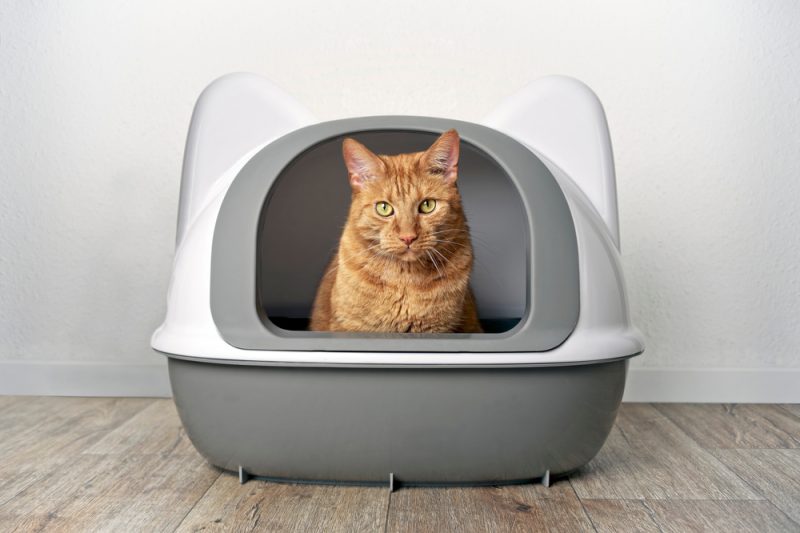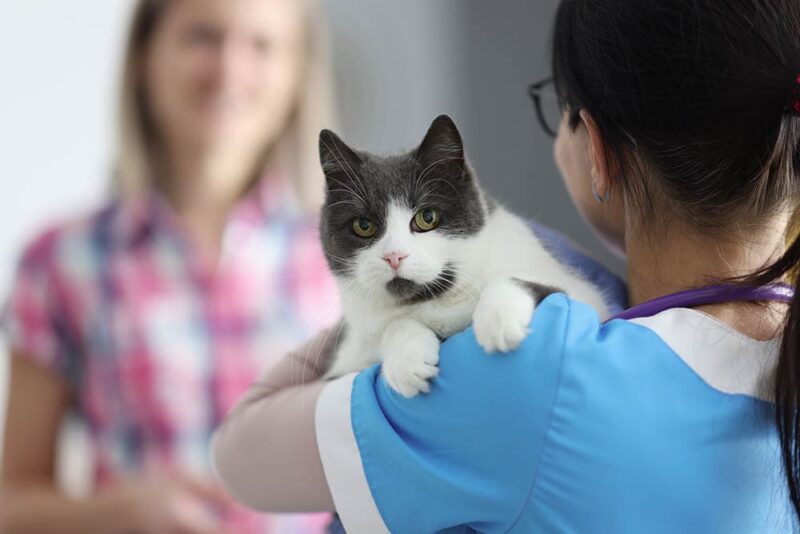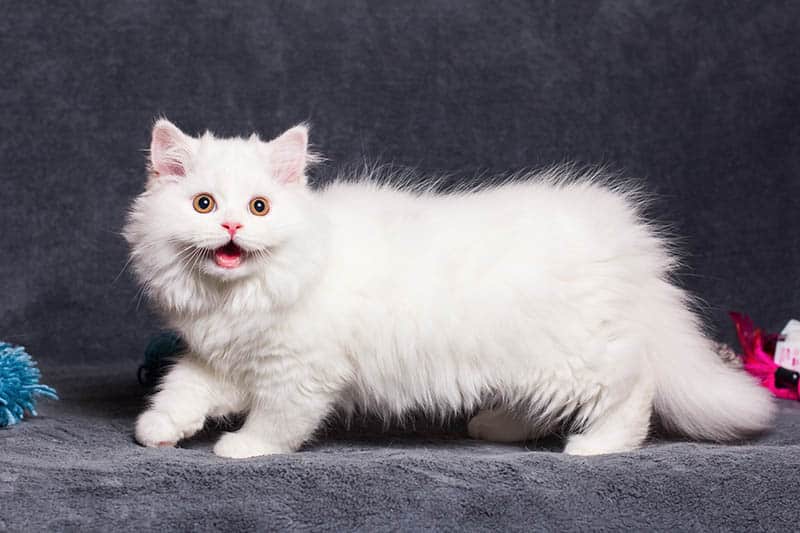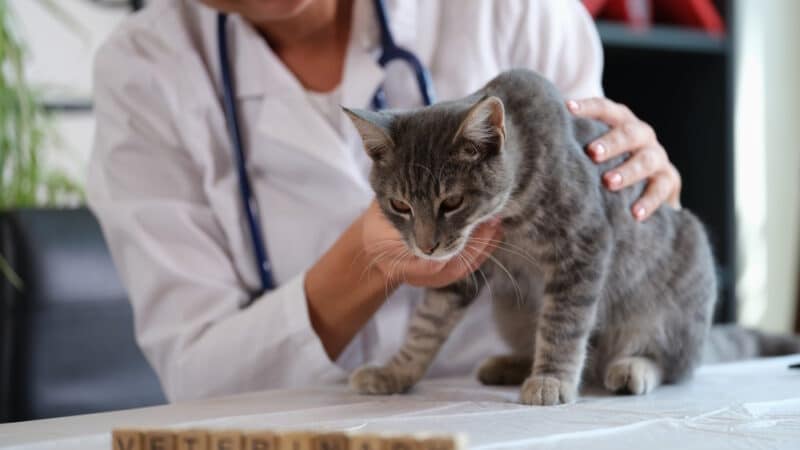Cats are notorious for being particular about their litter boxes. Most have specific ideas about where their facilities should be located, what type of litter they want to use, and how clean the boxes should be. Eliminating outside the litter box can sometimes be related to medical conditions, and a veterinarian should examine cats that exhibit sudden changes in restroom habits.
Providing cats with a clean litter box can help keep them happy, healthy, and comfortable in their surroundings. Keep reading for nine litter box tips to set your cat up for success.

The 9 Cat Litter Box Tips to Set Your Cat Up for Success
1. Pay Attention to Placement
If given the choice, most cats prefer to have their litter boxes placed far away from where they eat. They also like to use the bathroom in relatively calm locations away from loud appliances.
Cats sometimes avoid using their litter boxes in areas like laundry rooms where there are loud noises. Having litter boxes on every floor of multi-story homes ensures cats have easy access to appropriate places to relieve themselves.

2. Consider the Size
Cats prefer large litter boxes since they provide enough room to turn around and dig. Models with relatively high sides are good investments for cats that are inclined to pee a bit high, but kittens need litter boxes with lower sides so they can climb in on their own.
3. Keep Design Qualities in Mind
Litter boxes with tops are popular with owners since they hide the mess, but because they trap smells, they can quickly become too pungent for cats to feel comfortable.
Many don’t like the feeling of being enclosed and become stressed when unable to keep an eye on what’s happening around them while using the bathroom, which can cause them to urinate or defecate elsewhere. Self-cleaning litter boxes are convenient but can be noisy and scare some cats off.

4. Think About the Type of Litter
Many cats dislike the smell of scented litter and find it too strong to tolerate, which can cause them to avoid the litter box. However, cat safe litter additives like Hepper’s Advanced Bio-Enzyme Cat Litter Deodorizer Powder can reduce the smell and absorb odors. Cats prefer to have a few inches of litter to dig around in, and you can add fresh litter when you remove the waste to top it off.
You may have to experiment with different types of litter if your cat doesn’t like the current one, and you have several options, including clay, paper, crystal, and corn litter.
5. Scoop the Box Frequently
Litter boxes must be scooped daily to keep smells to a minimum and bacteria and germs under control. Clumping and crystal litters both require daily scooping to keep cats happy.
Litter boxes in homes with more than one cat require far more scooping to stay fresh, and you may need to remove the waste several times a day. Some cats won’t use the bathroom in a litter box holding another pet’s waste, and it’s best to scoop the litter boxes in multi-cat homes as quickly as possible after they’re used.
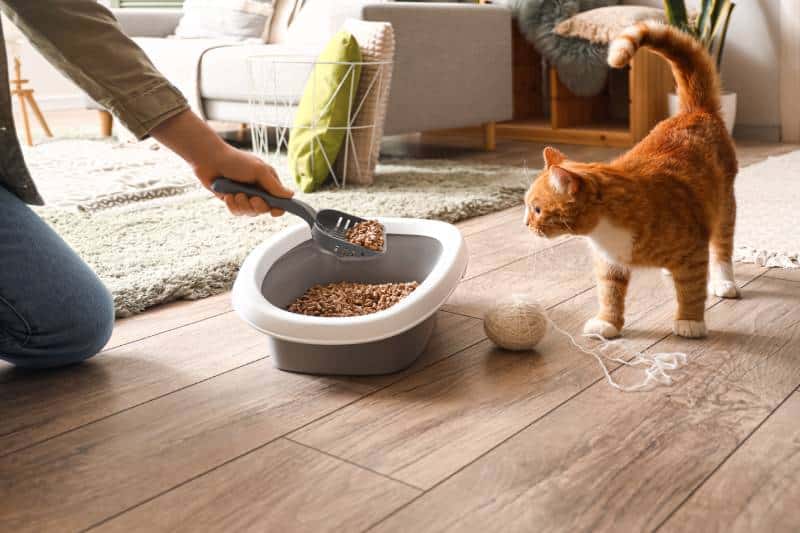
6. Get Serious About Cleaning
Plan to dump all the litter at least every few weeks and clean the box with soap and water. Many cats don’t like the scents associated with strong cleaning products; hot water and soap are usually all that’s needed.
You can also add vinegar to the water to get the litter box squeaky clean, but plastic litter boxes should be regularly replaced since they easily retain odors.
Combating tough cat litter smells is an ongoing battle for pet parents but luckily, there are products out there designed to help! Two products that significantly reduce odors are the Hepper Litter Additive and the Hepper Enzyme Spray. At Catster, we’ve admired Hepper for many years and decided to take a controlling ownership interest so that we could benefit from the outstanding designs of this cool cat company!
Image
Product
Details
Best Enzyme Cleaner

Hepper Advanced Bio-Enzyme Pet Stain & Odor Eliminator Spray
CHECK PRICE
Best Litter Additive
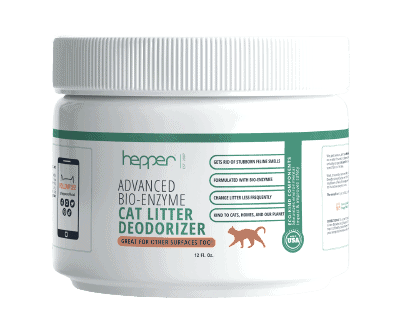
Advanced Bio-Enzyme Cat Litter Deodorizer
CHECK PRICE
7. Take Cats’ Special Needs Into Consideration
Older cats and those with mobility issues find it difficult to get into top-entry litter boxes and products with particularly high sides. Senior cats benefit from choices with at least one low side that provides easy entry. Ramps can also make litter boxes more accessible.
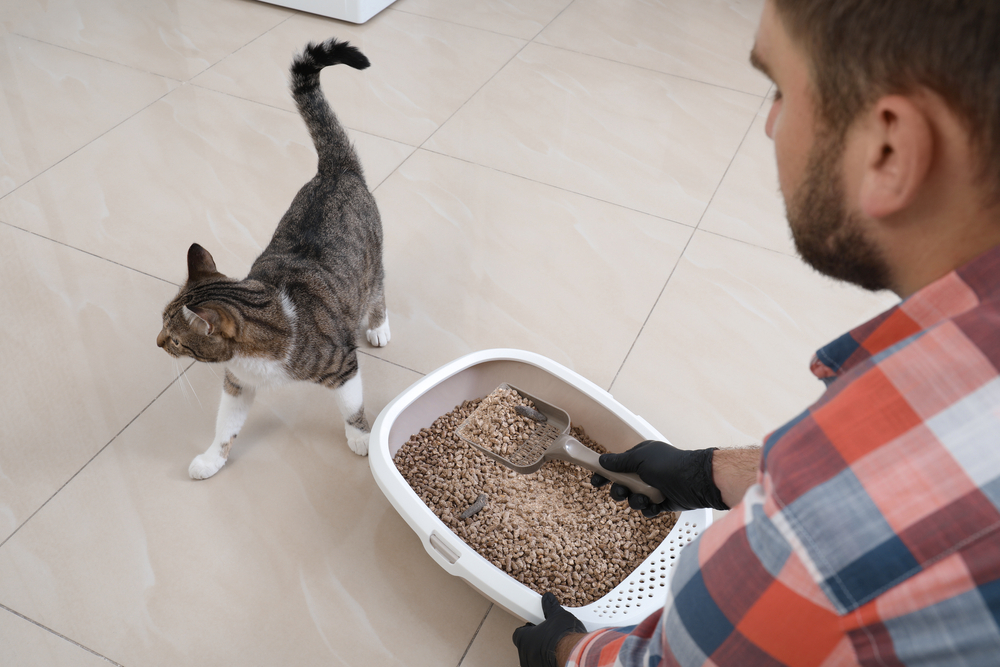
8. Be Liberal With Quantities
Cats aren’t fans of sharing litter boxes, and having enough in multi-cat homes is essential to ensuring kitties feel content, comfortable, and satisfied with their bathrooms. Multi-cat homes should have at least one litter box per pet and an extra to limit resource competition.
9. Minimize Changes
Environmental changes annoy cats, particularly when their litter boxes are involved. Try to pick a litter and stick with it unless there’s a good reason to switch things up, as cats can become upset by the changes.
Transitioning from one product to the next slowly gives cats time to become comfortable with new options. They don’t enjoy having their litter boxes moved from one place to another, and it’s best to keep them where they are if possible.

Conclusion
Cleaning up urine and feces from carpets isn’t anyone’s idea of fun, but thankfully, there are several ways to encourage cats to go to the bathroom where they should, such as placing their litter boxes in feline-friendly locations and selecting products with features they prefer.
Daily scooping is essential for keeping the litter boxes hygienic and clean. Having enough boxes in multi-pet homes and minimizing changes can also encourage good litter box behavior.
Featured Image Credit: Lightspruch, Shutterstock
